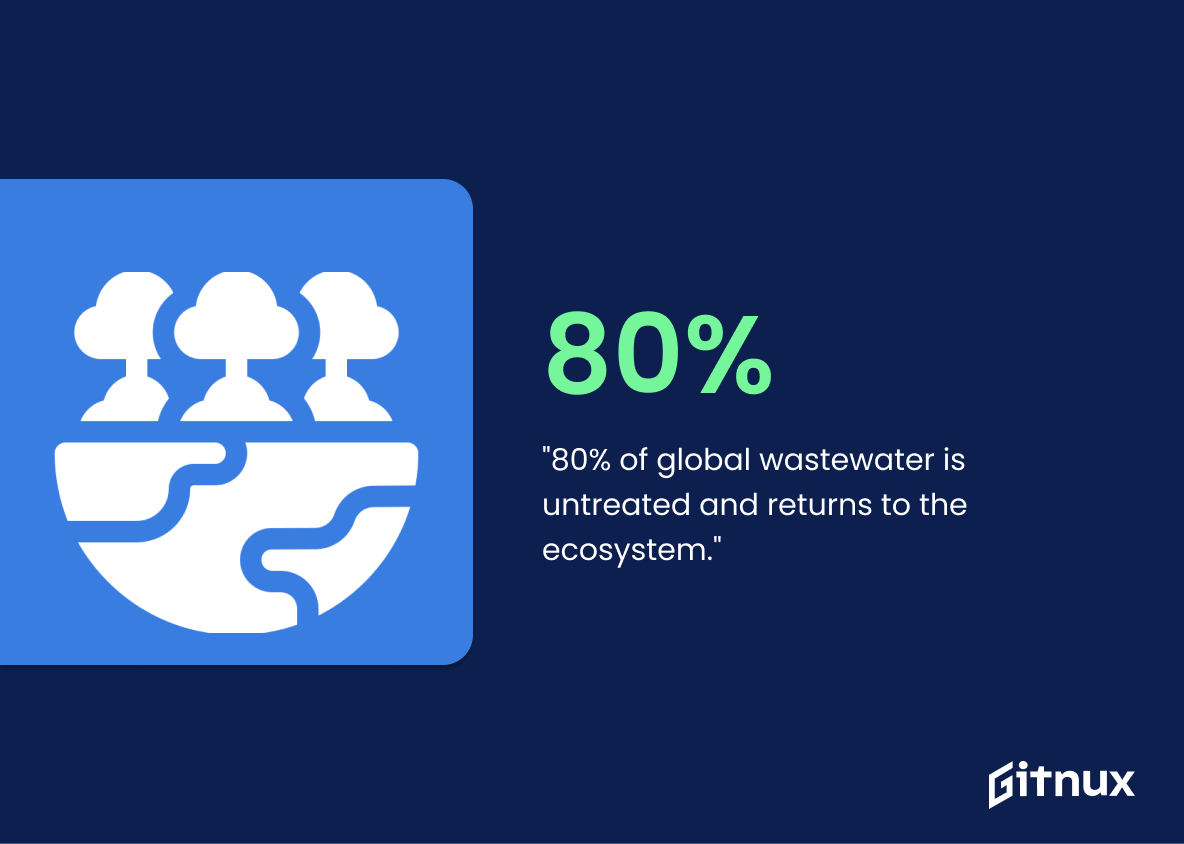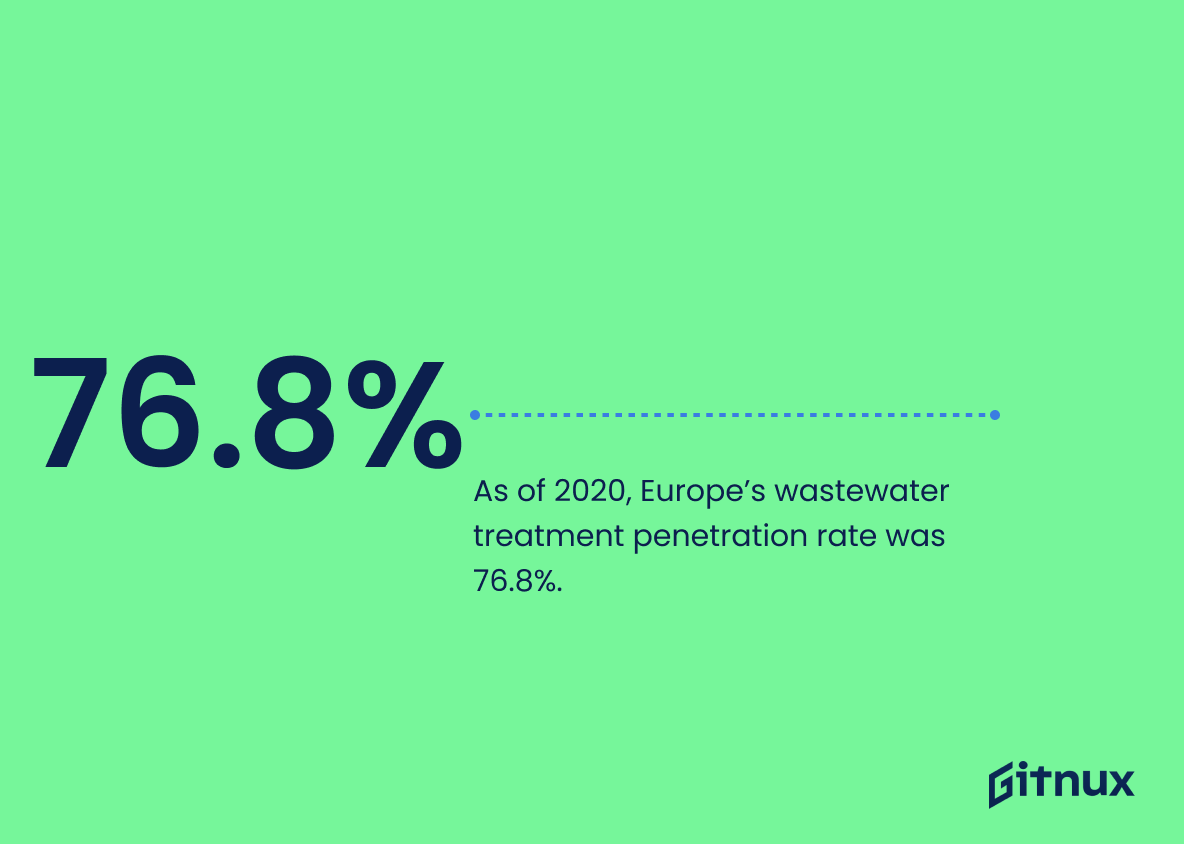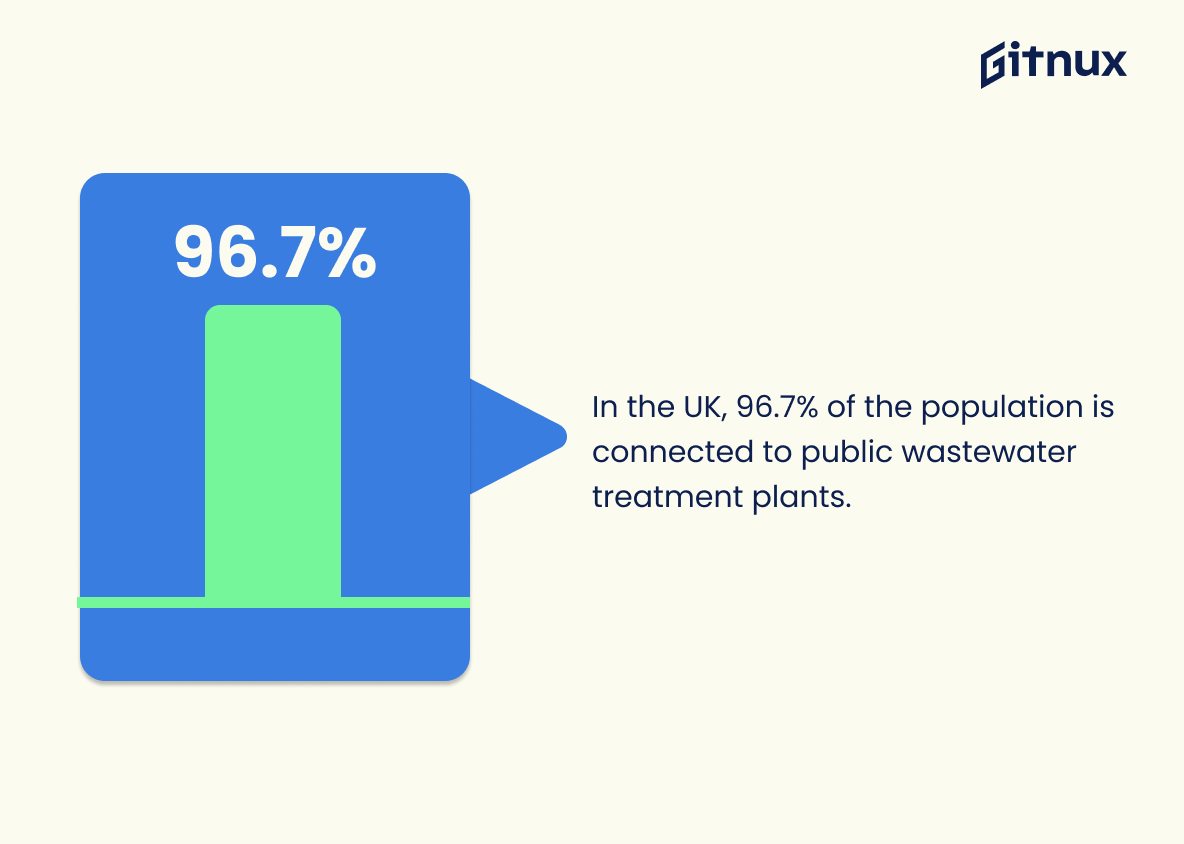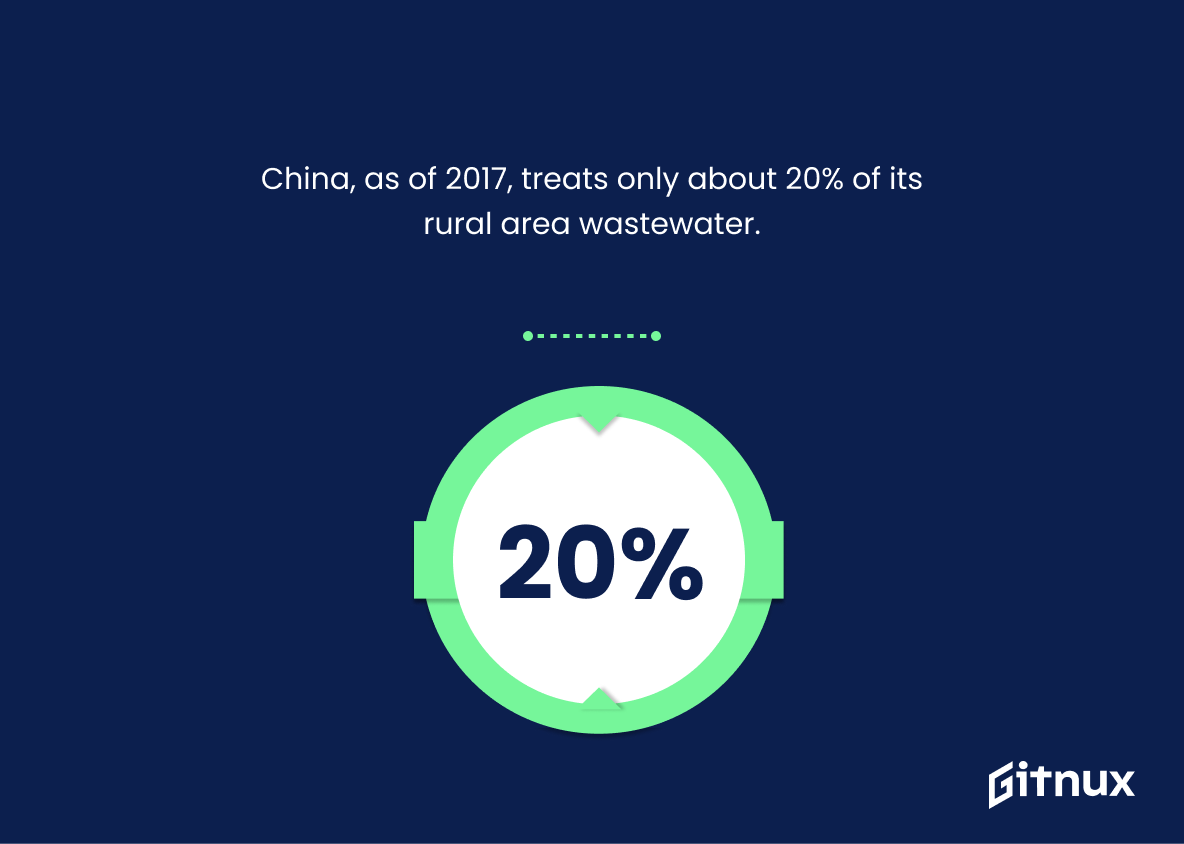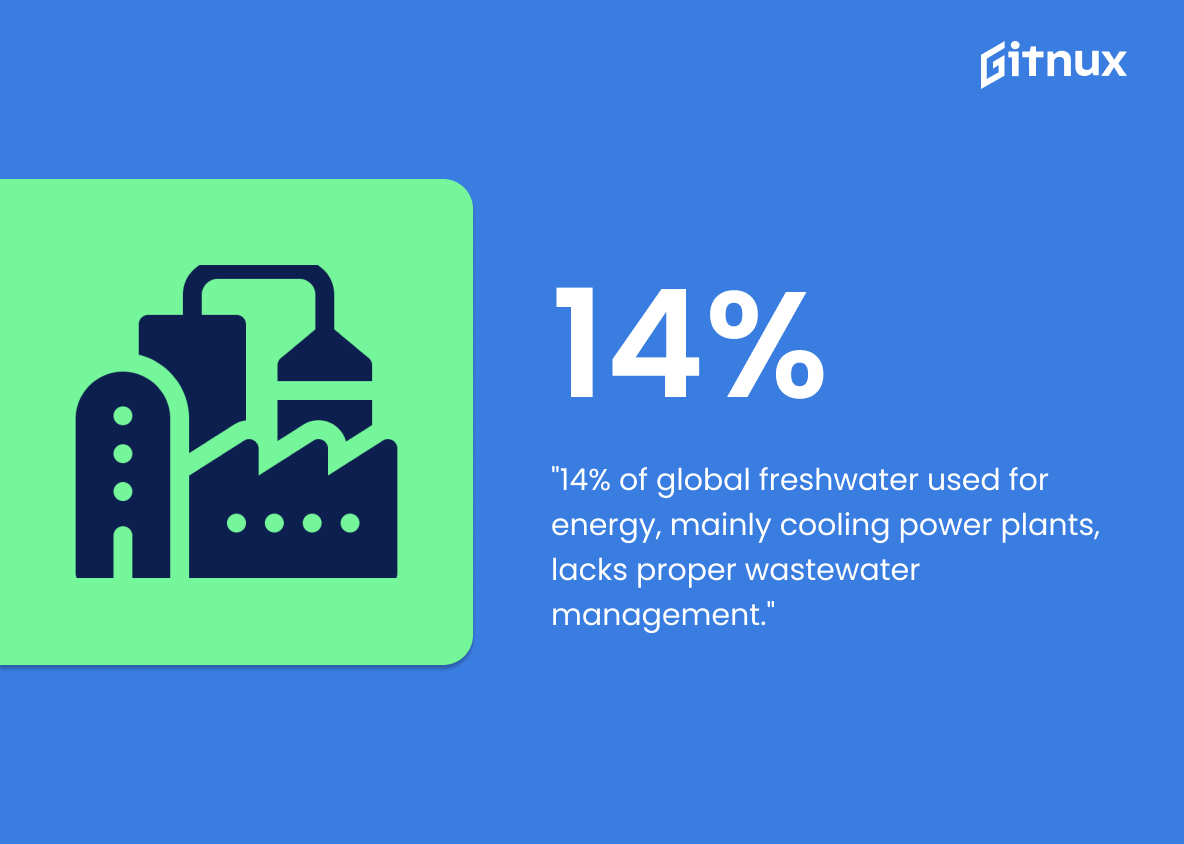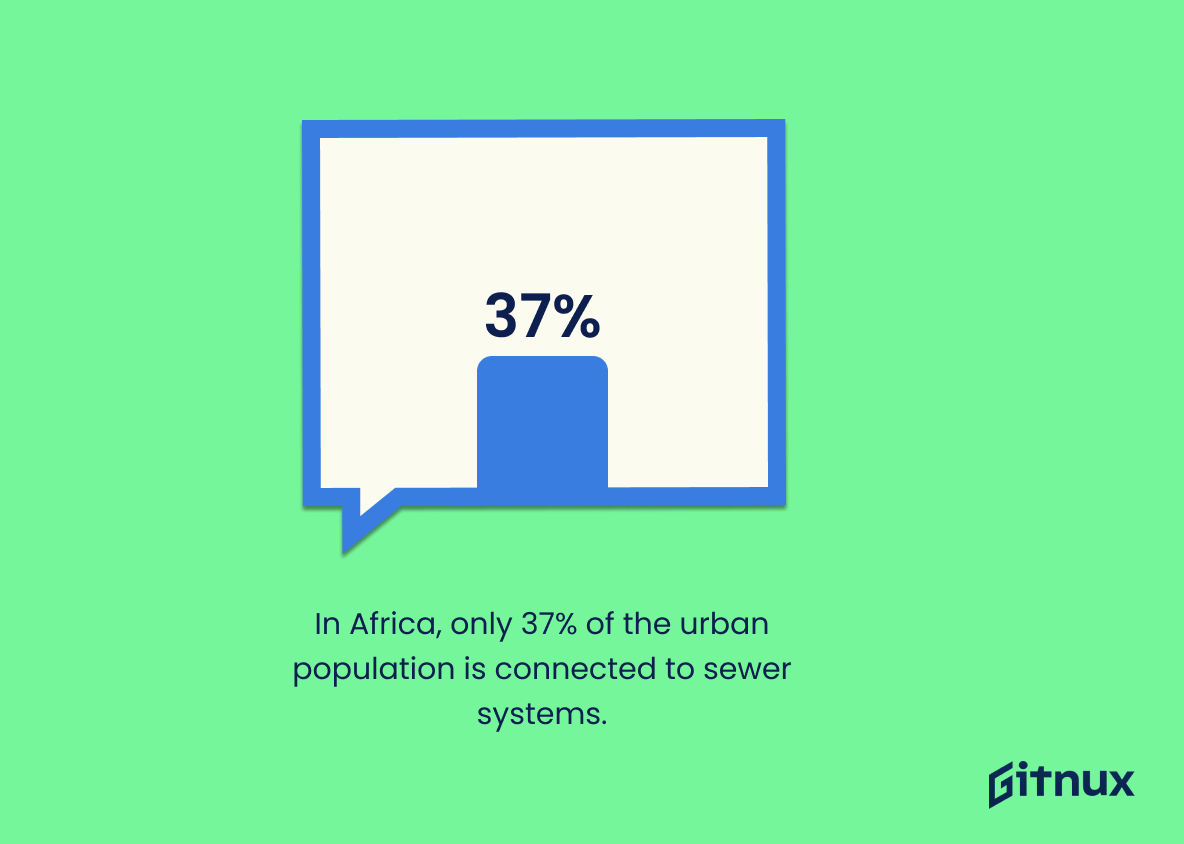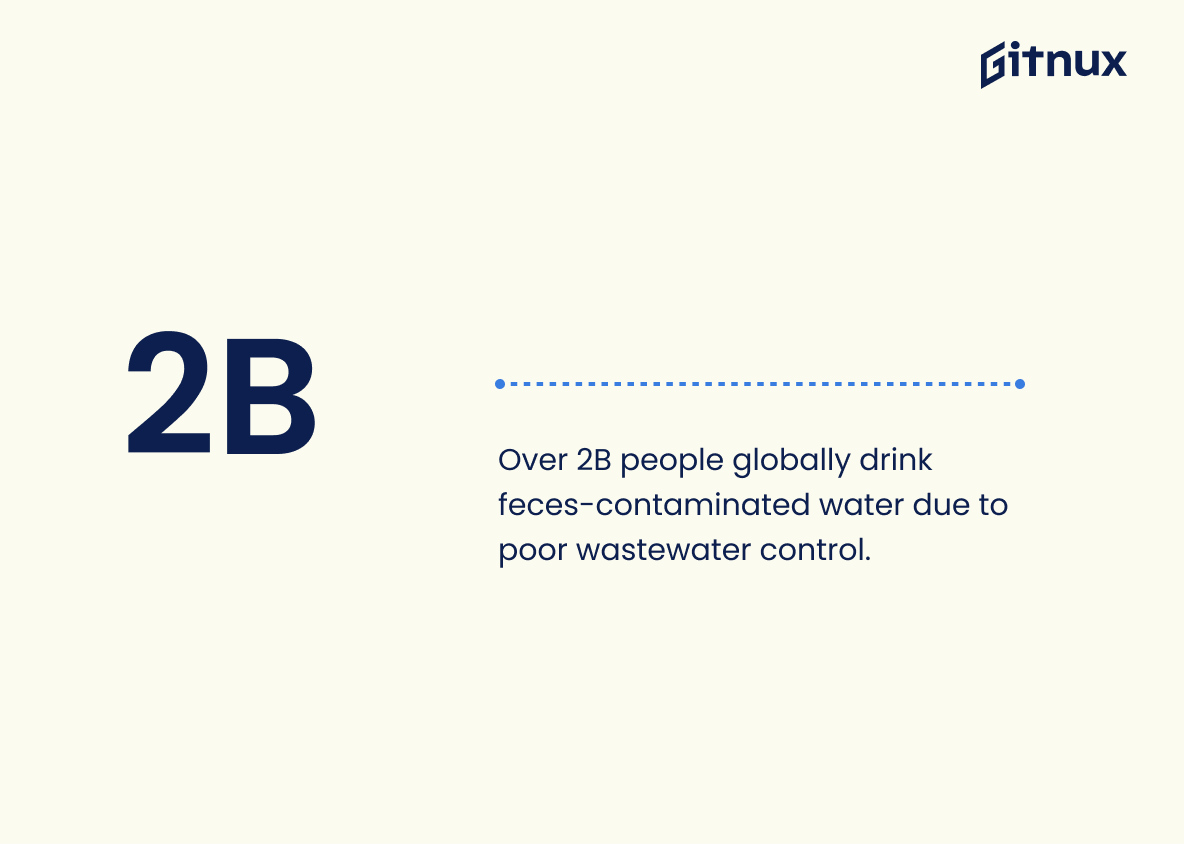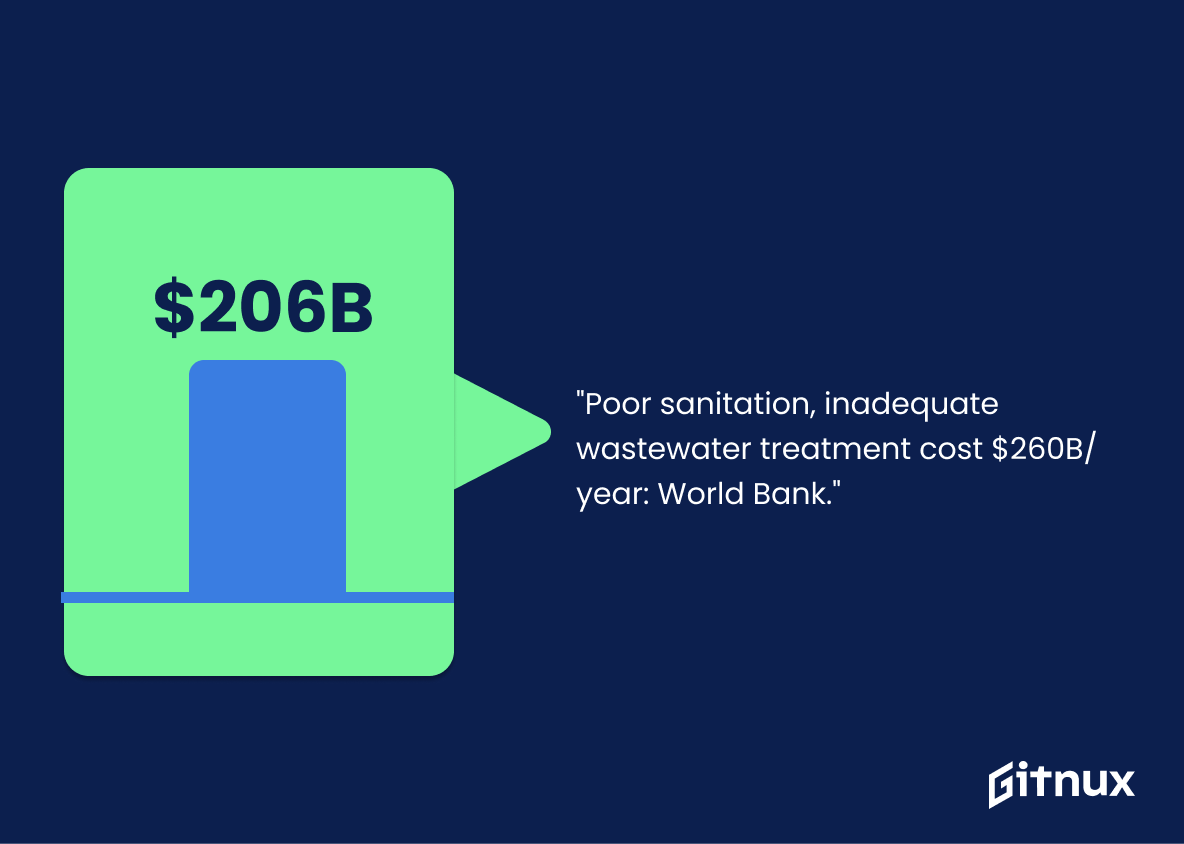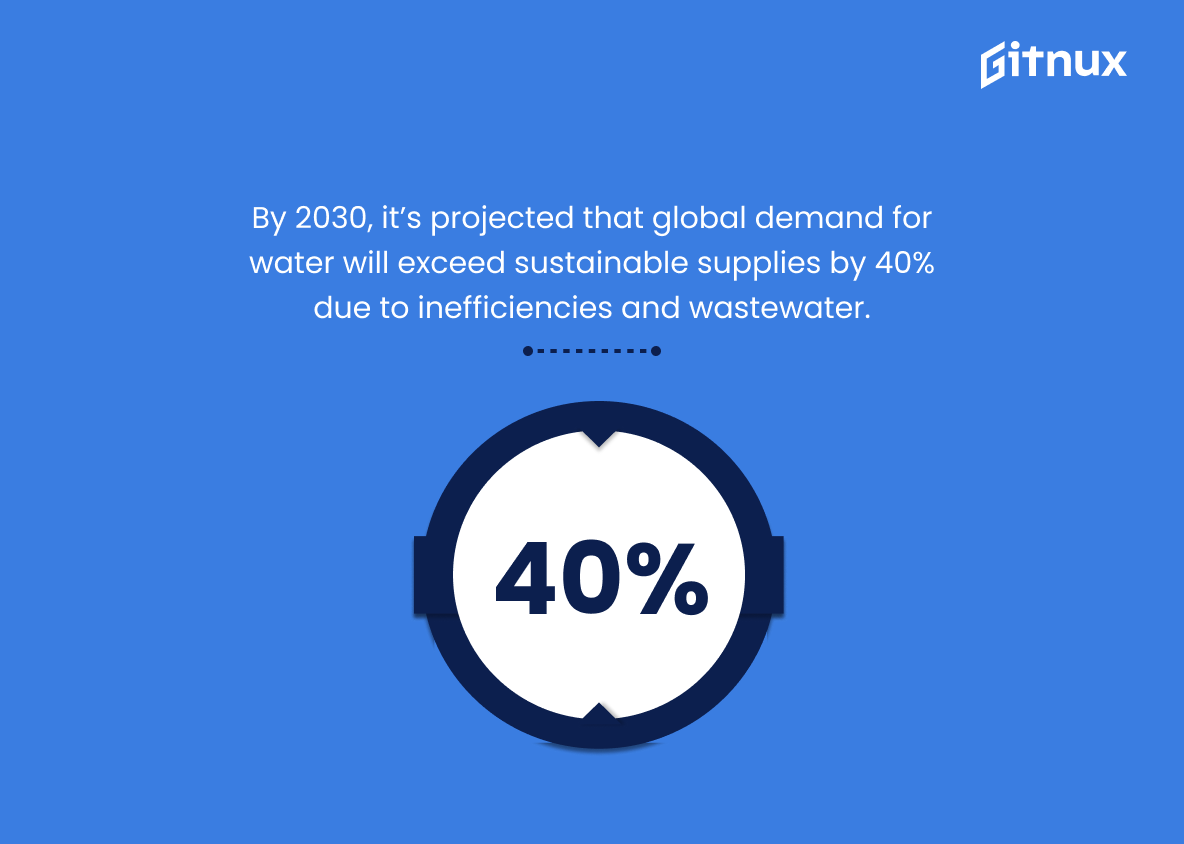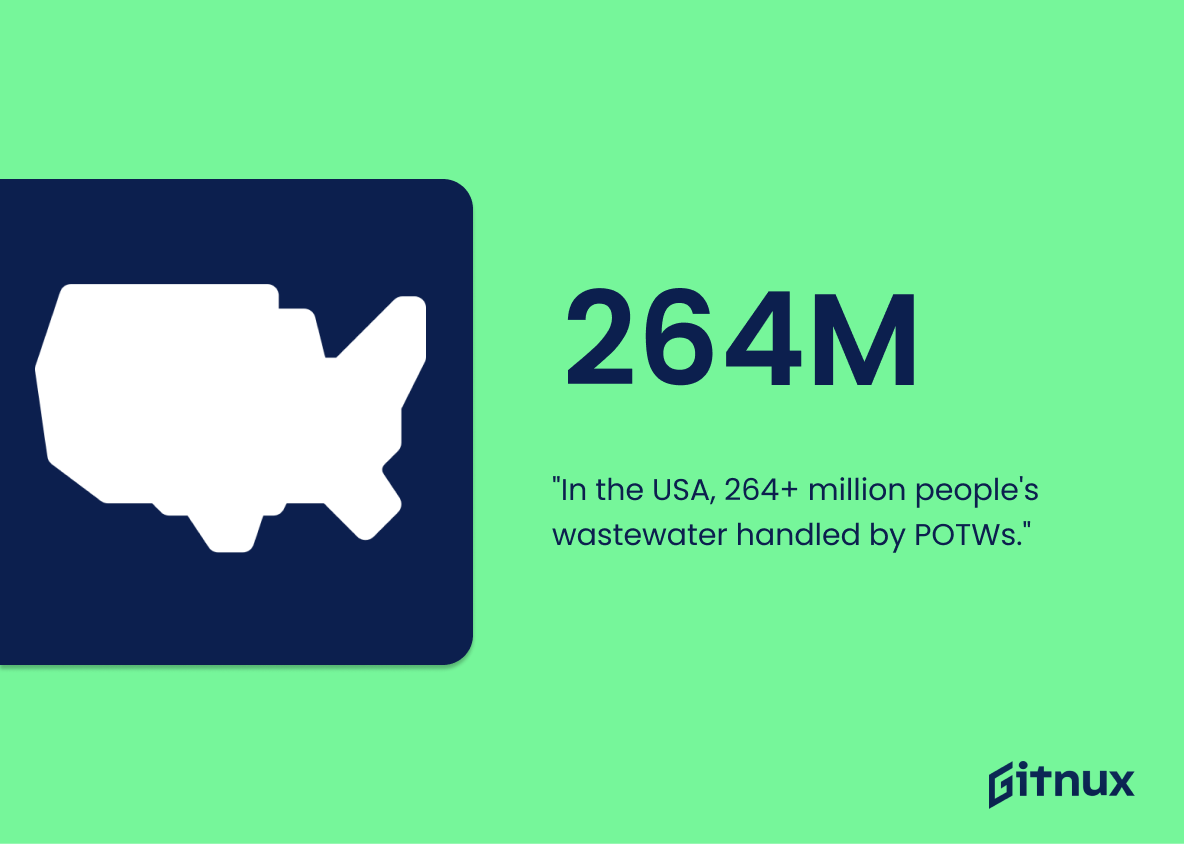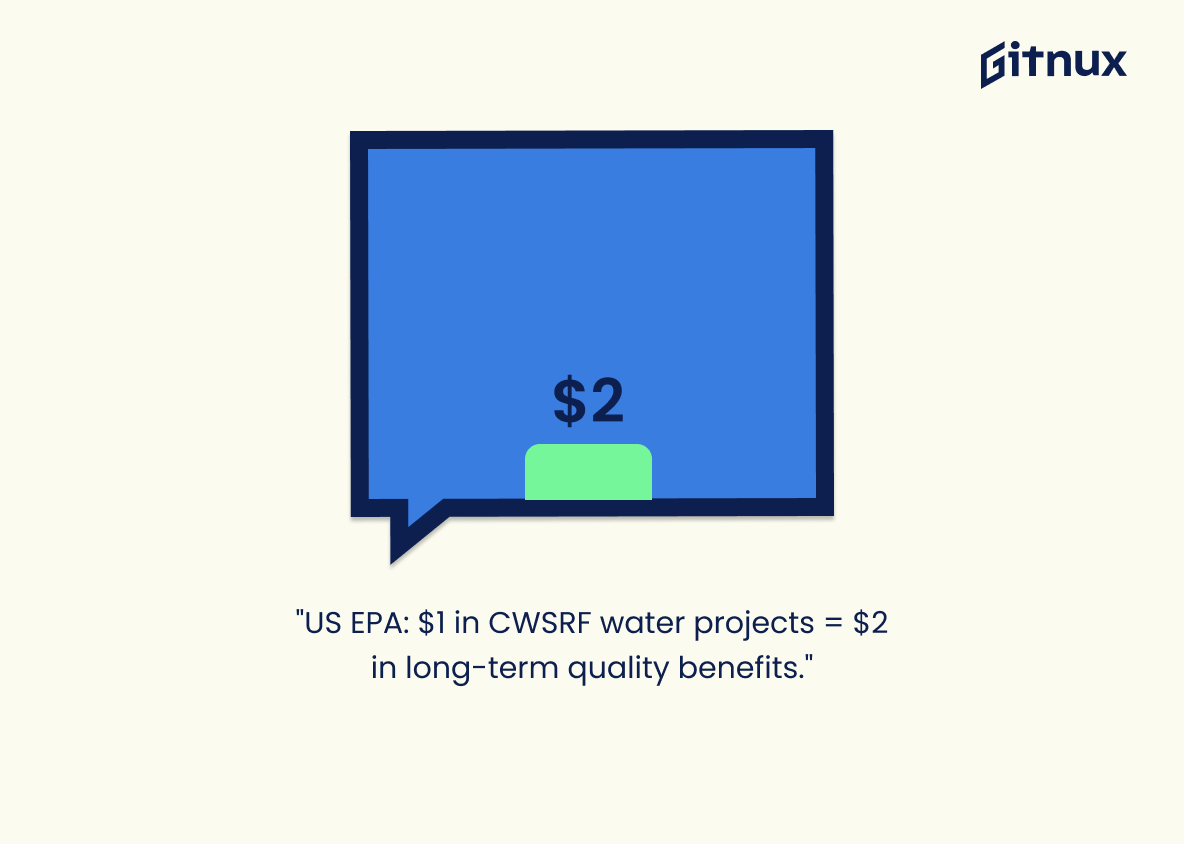As we delve into our daily routines, we often overlook the significant role wastewater management plays in our lives. Acting as an unsung hero securing our public health and environmental sustenance, it is a subject of substantial interest for environmental enthusiasts, public health officials, and responsible citizens globally. This blog post aims to shed some light on the intriguing world of wastewater statistics, presenting an insightful understanding of its management, the challenges involved, and the impact it has on our communities. So, let’s dive into the less trodden path of sewers and sanitation to unravel the meticulous process of wastewater management that serves as the backbone of our thriving civilizations.
The Latest Wastewater Statistics Unveiled
Globally, over 80% of the wastewater generated by society flows back into the ecosystem without being treated or reused.
Shining the spotlight on the shocking reality expressed in this figure, it paints a disturbing picture of just how carelessly we, as a global society, are handling our wastewater. Essentially, we’re irresponsibly allowing over 80% of wastewater to infiltrate the ecosystem unchecked — untreated and unrecycled. In a dialogue centered around wastewater statistics, this statistic serves as a dire warning and call to action, highlighting the gravity of negligence in wastewater management worldwide and urging immediate, effective measures to prevent further contamination and degradation of our precious ecosystems.
In North America, only approximately 61% of wastewater is treated.
Integrating this statistic into a blog post about Wastewater Statistics offers an audacious perspective into the sheer magnitude of untreated wastewater in North America. Anchoring this compilation, the 61% percentage frames a significant urban and environmental question. If nearly four out of ten litres of wastewater remain untreated, we must grapple with significant population health risks and environmental consequences. Simultaneously, it hammers home the urgency and necessity for technological advancements, policy changes, and societal shifts to amplify wastewater treatment. Let this number, 61%, resound as a clarion call rather than just a statistic. It highlights the road we’ve traversed and the steep path for addressing wastewater management in North America that lies ahead.
As of 2020, Europe’s wastewater treatment penetration rate was 76.8%.
Delving into the world of wastewater statistics, we find an encouraging figure resurfacing – Europe’s wastewater treatment penetration rate in 2020 was a promising 76.8%. This metric acts as a benchmark, or a beacon, shining light on Europe’s strides in environmental responsibility. It places a spotlight on the continent’s concerted efforts towards sustainable water management practices, simultaneously highlighting the effectiveness of their wastewater treatment strategies. In essence, this digit serves as proof that significant progress has been made, yet it also pinpoints the scope for future improvement, reminding us that we still approximately have 23.2% road to traverse. Ultimately, to understand wastewater trends globally, one cannot simply overlook Europe’s substantial contribution represented by this potent percentage.
In the UK, 96.7% of the population is connected to public wastewater treatment plants.
Delving into some fascinating aspects of wastewater statistics, let’s sift through the remarkable case of the United Kingdom, where an impressive 96.7% of the population is linked with public wastewater treatment plants. Indeed, this numerical affirmation not only showcases the UK’s significant advancements in sanitation infrastructure, but also frames the nation’s commitment to public health and environment protection – considering that a well-established wastewater management system can mitigate the peril of waterborne diseases and ensure that our natural bodies of water remain uncontaminated.
In the context of a blog dedicated to wastewater statistics, this percentage illuminates the potential reach of efficient wastewater management, acting as a benchmark for other nations aspiring for similar success. It’s a vigorous reminder of how numbers translated into real-world action can help secure the health of both the people and the planet. It also revolves around the dialogue on investing in infrastructure development, challenges in managing public services, and planning for sustainable cities.
China, as of 2017, treats only about 20% of its rural area wastewater.
Underscoring the urgency for better wastewater management, we spotlight the situation in China; only around 20% of the wastewater was treated in rural regions as of 2017. Harnessing this statistic uncovers the gaping discrepancy between the volume of wastewater generated and the capacity to treat it, particularly vivid in rural landscapes where infrastructure may be wanting. With China as the world’s most populous country, this low percentage paints a daunting picture of the global wastewater crisis. This snippet of reality starkly emphasizes the importance of improving wastewater management strategies, not just in China, but all over the globe.
It’s estimated that 14% of global freshwater withdrawal is taken for energy production, primarily for cooling power plants, with most of the generated wastewater being unmanaged.
One cannot overstate the significance of the revelation that 14% of global freshwater withdrawal is used for energy production, primarily for cooling power plants. This figure sets the stage for a critical conversation about the intersection of water and energy, as most of this water becomes unmanaged wastewater. A substantial proportion of our planet’s precious freshwater resources, it seems, is continually being converted into an environmental problem – wastewater. This alarming statistic heightens the urgency to develop more efficient and environmentally-friendly technologies for energy production, and underlines the gravity of wastewater management challenges that must be urgently addressed. The statistic is a wake-up call, reminding us of our collective responsibility to protect and preserve freshwater resources while producing the energy that powers our world.
In Africa, only 37% of the urban population is connected to sewer systems.
Observing the staggering revelation that only 37% of Africa’s urban population has access to sewer systems uncovers a shocking disparity in water sanitation services on the continent. Such a measure vividly illustrates the challenges in handling wastewater and underscores a critical issue in public health and environmental sustainability. With more than half of Africa’s city dwellers off the grid, the struggle with wastewater management becomes palpable, thus insisting on a call-to-action to improve urban infrastructure. Consequently, this statistic underscores the urgency in the discourse on wastewater statistics while paving the way for deeper analysis and innovative solutions in the field.
Globally, more than 2 billion people drink water from sources that became contaminated by fecal matter due to inadequate wastewater management.
Showcasing this alarming figure underscores the necessity for us to up our game in the struggle against inadequate wastewater management across the globe. The blog post on Wastewater Statistics is aimed at raising awareness about the gravity of the situation, and the statistic featuring 2 billion people drinking fecally contaminated water significantly punctuates this effort. It offers startling clarity about the reach of this global issue, its direct impact on human health, and highlights the urgency for better strategies in managing wastewater. The intent is to stimulate constructive dialogue and encourage practical actions to rectify the worsening water crisis for a healthier and safer planet.
The World Bank estimates that poor sanitation and insufficient treatment of wastewater leads to a global economic loss of US$260 billion annually.
Diving deep into the realm of wastewater statistics delivers a sobering revelation. Imagine the absolute highest pile of cash you can, brimming with US dollars. Now, multiply it many times over until it towers at an astronomical figure of US$260 billion. This staggering sum emerges from the shadows of poor sanitation and inadequate wastewater treatment globally, presenting a chilling image of economic hemorrhage as estimated by the World Bank. It doesn’t just echo the financial void left by improper practices in this area. Also, it underscores the urgency for responsible strategies and effective solutions to slow this steady fiscal bleed and possibly reverse it. Hence, within the stirring narrative of wastewater statistics, this specific information holds not just administrative weight but also a clarion call for collective action.
By 2030, it’s projected that global demand for water will exceed sustainable supplies by 40% due to inefficiencies and wastewater.
Painting a vivid picture of our foreseeable future, the statistic presents a startling reality that by 2030, the world’s thirst for water will outpace sustainable supplies by 40%, primarily due to wastage and inefficiency. Incorporating this statistic into a discussion about wastewater statistics reveals the gravity and urgency of the situation we are heading towards. Without prompt and substantial strategies to curb the wasteful usage of water and to heighten the efficiency of our wastewater management systems, we face the specter of a colossal water shortage. This pressing prognosis serves as an alarming call-to-action for industries, policy-makers, and consumers alike to reassess our complex relationship with water and lay groundwork for sustainable water stewardship.
In the United States of America, Publicly Owned Treatment Works (POTWs) manage wastewater from more than 264 million people.
Think of the immense volume of wastewater generated by over 264 million people every day – all the flushes, showers, sinks, and commercial uses. This immense figure isn’t just a number; it’s a testament to the crucial role Publicly Owned Treatment Works (POTWs) play in preventing environmental pollution and protecting public health in the U.S. Imagining this scenario provides a vivid picture of the responsibility shouldered by the POTWs and highlights the significance of wastewater statistics in gauging and evolving current system performances. The mere existence of this massive system to manage the repurposing process efficiently stands as a powerful indicator of the importance of wastewater statistics.
The U.S Environmental Protection Agency estimated that the national average return on every dollar invested in Clean Water State Revolving Fund (CWSRF) treated water projects generates $2 in long-term water quality benefits.
Delving into the richness of wastewater statistics, it unveils a fascinating revelation: a strategic investment in the Clean Water State Revolving Fund (CWSRF) treated water projects. The U.S Environmental Protection Agency’s economic estimate illustrates an intriguing narrative — each dollar poured into this initiative can potentially yield double — $2.00 in enduring water quality benefits. Ensconced in this numerical wisdom is the potential for vast environmental benefits that many might overlook.
In the realm of the ever-vital wastewater management, this quantifiable assurance of such an impressive return on investment not only testifies to the effectiveness of these water treatment projects but also underscores their pivotal role in enhancing nationwide water quality. It articulates the worth of every dollar devoted, framing investments in water treatment as lucrative — not just for investors, but for society.
Moreover, this statistic inspires a compelling argument for increased funding and implementation of such crucial water treatment initiatives. As we dig deeper into the world of wastewater, it becomes evident that the boon of water quality improvement could also translate into better health, stronger ecosystems, and an overall more sustainable future for all. Hence, the environmental scope of wastewater statistics transforms them from an abstract collection of numbers into a meaningful call for action, indeed, a eulogy to the elixir of life – water.
Each year, municipal wastewater plants in Canada treat approximately 18.5 billion cubic meters of wastewater.
Diving into the depths of the myriad wastewater statistics, there is an eye-opening figure that bellows for attention. Canada’s municipal wastewater plants address a staggering 18.5 billion cubic meters of wastewater annually. This voluminous statistic is far from a mere number – it is a testament to the indispensable role these facilities play in maintaining public health, preserving the local environment, and bolstering sustainable practices. Just imagine, without wastewater treatment plants working at this capacity, billions of cubic meters of untreated water could devastate the natural ecosystem, endanger wildlife, and pose serious health risks to the population. This figure serves as a water-tight argument for continual policy and funding support for these vital institutions.
Conclusion
In summation, understanding wastewater statistics has never been more crucial than now. They not only provide a comprehensive perspective on our water usage, sanitation efficiencies, and untapped resources, but by analysing them, we can strategise better ways to contribute to environmental sustainability. Generating critical insights into contaminants, pollution sources, and health implications aids in fostering practical methods to enhance our wastewater management. Collectively and individually, we all play a role in reshaping these statistics towards a sustainable future. Remember, every drop saved today contributes to a healthier and more secure tomorrow.
References
0. – https://www.www.afdb.org
1. – https://www.www.greenbiz.com
2. – https://www.www.unwater.org
3. – https://www.www.asef.org
4. – https://www.www.fao.org
5. – https://www.www.ec.gc.ca
6. – https://www.pubdocs.worldbank.org
7. – https://www.www.worldbank.org
8. – https://www.www.water.org.uk
9. – https://www.www.eea.europa.eu
10. – https://www.www.statista.com
11. – https://www.www.epa.gov
